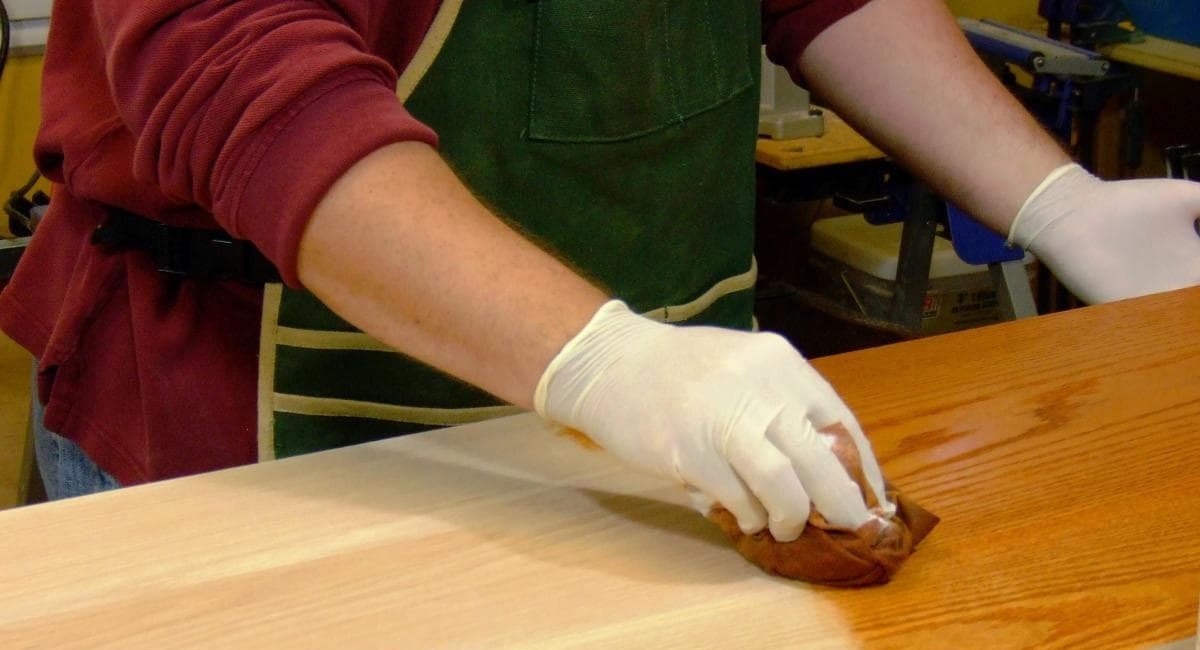Oil-Soluble Wood-Stains
Oil-soluble dyes do not form a distinct class of colors either chemically or by application. Colors from any of the various coal tar groups that happen to be soluble in any one of the volatile oils are selected, especially the kinds that are most permanent on exposure to sunlight.
Some of the best oil-soluble dyes for use as stains on wood are found in the following list:
- Red—Bismarck Brown,
- Carmosine, and Oil Scarlet 6 G.
- Orange—Oil Orange G, and Oil Orange Y (extra concentrated).
- Yellow—Oil Yellow, Auramine Yellow, and Naphthalene Yellow.
- Green—A mixture of yellow and blue.
- Blue—Victoria Blue.
- Brown—Oil Brown M, Loutre, and Seal Brown.
- Brown Mahogany—Orange G or Y, and Naphthalene Black, or Oil Brown M.
- Black—Oil Black, oil soluble Nigrosine, and Naphthalene.
Oil soluble colors are usually dissolved in turpentine, but benzene or benzol, naphtha, gasoline, and carbon tetrachloride, can also be used as solvents for nearly all such colors.
Classes of Dyes Used in Wood-Finishing
Most of the books and magazine articles which have been written about dyes have been produced for the textile colorist or dyer, rather than for the person who wishes to use dyes for the purpose of staining wood fireplace designs, wood frames, or frieze boards. The dyes themselves were usually manufactured for dyeing cloth rather than for staining wood. Consequently the characteristics of the various dyes are usually given with reference to their reaction on various kinds of cloth fibers.
Acid coal tar dyes are used by the textile dyer to color fibers of silk and wool. Many of these acid dyes will not color cotton fibers, but they will easily stain the lignocellulose fibers, which compose the chief mass of wood substance. Practically any of the acid coal tar dyes which are ordinarily used for dyeing silk and wool can be considered as satisfactory stains for wood.
Dyes for cloth must prove satisfactory in various tests such as fastness to light, fastness to washing, fastness to milling, and also to “stoving,” to crocking, or to rubbing. In selecting an acid coal tar dye for use as a wood stain the chief considerations are fastness to light and the price of the dyestuff. The best of the acid coal-tar dyes are the most lightproof colors that can be obtained and are now used extensively as wood-stains for wood frames, wood corner blocks, and wood fireplace accessories.
Acid dyes can usually be mixed together to form new colors, even though the individual dyes may come from different chemical groups. Acid dyes should not be mixed with basic colors, even though the latter may be soluble in water, nor should either of these groups of stains be combined with spirit soluble or oil soluble dyes. They are not usually acid in reaction but are alkaline salts of sodium, potassium, or ammonium.
Basic dyes are usually chlorides, but occasionally other salts such as sulphates, olalates, acetates, or nitrates are found. If an acid dye in a solution of water is mixed with a basic dye in an aqueous solution, a chemical reaction may take place, and a new substance which is soluble in water may be formed. In some cases a compound neutral dye may be produced. Direct or salt dyes can be used in much the same manner as acid dyes for staining wood.
In fact, direct colors can often be mixed with acid colors in preparing wood stains. The mixing of colors from the different application classes involves a greater risk, however, and is not recommended. Basic dyes when used by the textile-dyer are dissolved in water, are often used on cotton, and are “fixed” with a mordant. Basic dyes are generally soluble in alcohol, and are the colors used by a wood finisher when he wishes spirit soluble colors for designer window toppers, fireplace designs, or wood corner blocks.
In general, basic colors are more fugitive than acid coal tar dye colors. Hence they are not as satisfactory for use in stains for wood. Dyestuffs taken from the other application classes, while useful and practicable as textile-dyes, are rarely used on wood because of the difficulty in application to such material. In other words, mordant dyes, pigment dyes, developing colors, sulphur colors, and vat dyes are not in common use by wood finishers, though they are valuable textile dyes.
